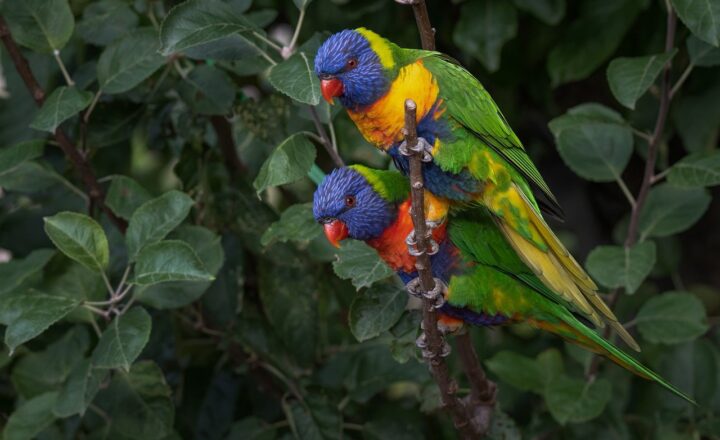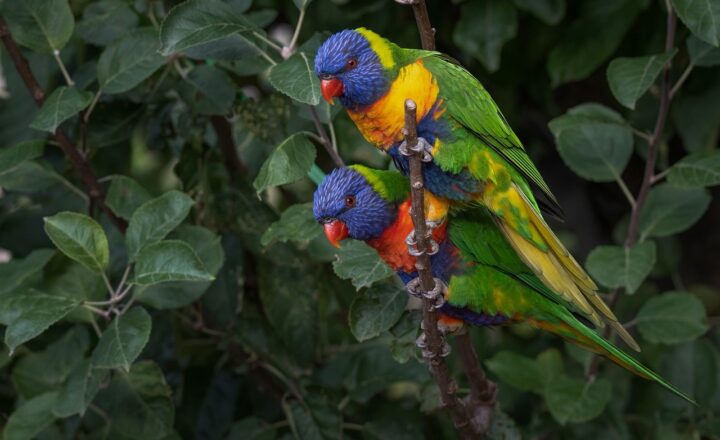How to Keep Parrots Happy and Engaged: The Ultimate Guide to Enriching Your Feathered Friend’s Life
November 13, 2024

Parrots are intelligent, social, and vibrant creatures that can make wonderful companions. However, to ensure they thrive in a home environment, it is crucial to keep them happy and engaged. Just like us, parrots experience boredom and loneliness, so providing enrichment activities is essential for their well-being. In this ultimate guide, we will delve into various ways to enhance the lives of your feathered friends, covering everything from environmental enrichment to social interaction.
1. Understanding Parrot Behavior
Before diving into enrichment strategies, it is vital to understand your parrot’s natural behaviors. In the wild, parrots engage in various activities such as foraging for food, playing with fellow flock members, and exploring their surroundings. Replicating these behaviors at home fosters a stimulating environment conducive to their happiness.
Parrots thrive on mental stimulation and physical activity. Here are some fundamental behaviors common among parrots:
- Foraging: Finding food is a primary activity for parrots. They spend a significant portion of their day searching for seeds, fruits, and nuts in their natural habitat.
- Social Interaction: As highly social creatures, parrots require ample interaction with their human caregivers or other birds to keep them emotionally fulfilled.
- Exploration: Parrots love to explore their environment, climbing, swinging, and flying whenever possible. This exploration contributes to their physical health and happiness.
Understanding these behaviors lays the groundwork for effective enrichment techniques.
2. Creating an Enriching Environment
The first step to keeping your parrot content is providing a stimulating habitat. Here’s how to optimize their living space:
A. Cage Enrichment:
Your parrot’s cage should be equipped with various features that promote exploration and play. Consider adding:
- Perches of Various Sizes and Textures: Provide perches made from different materials such as wood, rope, and natural branches to keep their feet healthy and stimulated.
- Toys for Play: Include an assortment of toys, such as chew toys, climbing structures, and puzzles that challenge their minds and encourage play. Rotate toys regularly to maintain their interest.
- Hiding Spots: Incorporate boxes or paper bags where your parrot can hide and explore, mimicking their natural behaviors in the wild.
B. Daily Routine Changes:
Change your parrot’s environment regularly by rearranging items in their cage or moving their perch locations. Variation in their surroundings can greatly increase mental stimulation and prevent boredom.
3. Foraging Opportunities
As highly inquisitive creatures, parrots enjoy foraging. This can be easily replicated through creative feeding techniques:
- Food Hiding: Hide small amounts of their favorite food (seeds, treats, or fruits) throughout their cage or in toys specifically designed for foraging. This encourages natural foraging behaviors and keeps them busy for extended periods.
- Puzzle Feeders: Invest in puzzle feeders that require birds to complete a task or solve a challenge to access their food. This not only stimulates their minds but also prolongs feeding time, making meals more engaging.
- Homemade Foraging Toys: Create your own foraging toys by filling paper towel rolls or crumpled paper with treats. This DIY approach is not only cost-effective but also allows you to tailor difficulty levels based on your pet’s skill set.
4. Interactive Playtime
Dedicated playtime is another vital aspect of keeping your parrot stimulated. Regularly engaging in interactive play strengthens your bond and satisfies their social needs:
- Out-of-Cage Time: Allow your parrot to explore outside of their cage for several hours each day in a safe environment. Supervise them to ensure they don’t get into hazardous situations or chew on unsafe objects.
- Target Training: Teach your parrot to follow a target stick or your finger to encourage movement and engagement. This not only occupies their time but also trains them in a fun way, reinforcing your relationship.
- Wing-Clip Alternatives: If you have a flying bird, consider providing a designated area for flight, such as a bird-safe room or a flight aviary, allowing your parrot to spread their wings freely while still ensuring safety.
5. Social Interaction
Social interaction is crucial for parrots, as they are naturally flock-oriented animals. Here’s how to enhance their social experiences:
- Daily Handling: Spend time handling your parrot daily. Encourage them to perch on your finger, offer head scritches, and talk to them regularly to strengthen your bond.
- Introducing New Birds: If you have the appropriate living conditions, consider introducing other compatible birds to your household. Socializing with fellow birds can enhance their life experience.
- Scheduled Interactions: Ensure daily quality time is set aside where your parrot experiences undivided attention, whether through conversation, play, or training exercises.
6. Nutrition and Diet
Proper nutrition is critical for your parrot’s health and happiness. A well-balanced diet keeps them physically healthy, which directly influences their mood and levels of activity:
- Pelleted Diets: Provide a high-quality pellet as the main component of their diet to meet their nutritional needs.
- Fruits and Vegetables: Supplement their diet with fresh fruits (apples, berries) and vegetables (carrots, broccoli). Experiment with different colors and textures to keep meals appealing.
- Seeds in Moderation: While seeds can be a tasty treat, they should be given in moderation as they are often high in fat. Consider using seeds as part of foraging activities to make them more stimulating.
A varied diet not only nourishes your parrot but also makes feeding time a rewarding experience.
Conclusion
Keeping parrots happy and engaged involves a combination of environmental enrichment, mental stimulation, social interaction, and sound nutrition. By understanding their natural behaviors and applying the enrichment strategies discussed in this guide, you can significantly enhance your parrot’s quality of life.
In summary, create a dynamic space filled with toys, stimulate them physically and mentally by engaging in play, and ensure they receive ample social interaction. With attention and care, your parrot will thrive, becoming a beloved companion that enhances your life.
Remember, a happy parrot reflects a joyful home, and investing time in their well-being is rewarding for both of you. Let the feathered fun begin!






